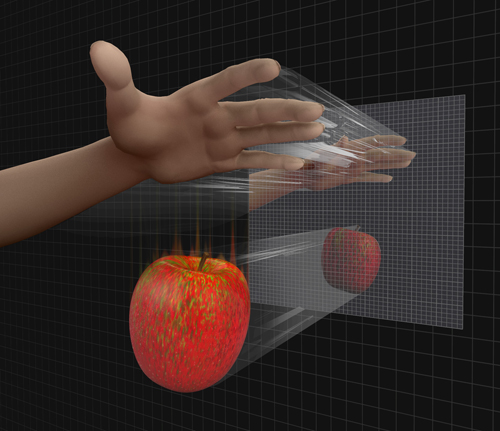
Friday, January 29, 2010
Wednesday, January 27, 2010
Krishnamurti & David Bohm - The Future of Humanity
The Future of Humanity is a dialogue between J. Krishnamurti and David Bohm which took place in Brockwood Park, England in 1983:
"The ability to perceive or think differently is more important than the knowledge gained". - David Bohm
"In oneself lies the whole world and if you know how to look and learn, the door is there and the key is in your hand. Nobody on earth can give you either the key or the door to open, except yourself." - J. Krishnamurti
Optical Trapping

"These are a few short clips illustrating the phenomenon of optical trapping. Essentially, a felt tip marker is briefly burned just above the focal point of a ~250mW 650nm laser, releasing an extremely small particle. This is not the intersection between the laser and some smoke; it's an actual particle embedded in the laser beam.
Because radiation can exert pressure on objects, there is a set More..of force vectors always keeping the particle just above the waist of the beam. This phenomenon illustrates how light can behave as particles (photons) because the photons have momentum and are therefore able to impart forces onto objects. It is even possible to move the laser around gently and the particle will follow along."
This kinda blew my mind. I have never seen this done before. The wave/particle duality constantly makes me re-think what I know about reality - Toby
Wednesday, January 13, 2010
The Holographic Universe

Our world may be a giant hologram - newscientist.com
"For many months, the GEO600 team-members had been scratching their heads over inexplicable noise that is plaguing their giant detector. Then, out of the blue, a researcher approached them with an explanation. In fact, he had even predicted the noise before he knew they were detecting it. According to Craig Hogan, a physicist at the Fermilab particle physics lab in Batavia, Illinois, GEO600 has stumbled upon the fundamental limit of space-time - the point where space-time stops behaving like the smooth continuum Einstein described and instead dissolves into "grains", just as a newspaper photograph dissolves into dots as you zoom in. "It looks like GEO600 is being buffeted by the microscopic quantum convulsions of space-time," says Hogan.
If this doesn't blow your socks off, then Hogan, who has just been appointed director of Fermilab's Center for Particle Astrophysics, has an even bigger shock in store: "If the GEO600 result is what I suspect it is, then we are all living in a giant cosmic hologram."

Holographic principle - Wiki page
"The holographic principle is a property of quantum gravity and string theories which states that the description of a volume of space can be thought of as encoded on a boundary to the region—preferably a light-like boundary like a gravitational horizon. First proposed by Gerard 't Hooft, it was given a precise string-theory interpretation by Leonard Susskind.
In a larger and more speculative sense, the theory suggests that the entire universe can be seen as a two-dimensional information structure "painted" on the cosmological horizon, such that the three dimensions we observe are only an effective description at macroscopic scales and at low energies. Cosmological holography has not been made mathematically precise, partly because the cosmological horizon has a finite area and grows with time"

Wholeness and Implicate Order - Wiki page
"In the enfolded [or implicate] order, space and time are no longer the dominant factors determining the relationships of dependence or independence of different elements. Rather, an entirely different sort of basic connection of elements is possible, from which our ordinary notions of space and time, along with those of separately existent material particles, are abstracted as forms derived from the deeper order. These ordinary notions in fact appear in what is called the "explicate" or "unfolded" order, which is a special and distinguished form contained within the general totality of all the implicate orders" - David Bohm, 1980.
I HIGHLY recommend Wholeness and Implicate Order for a very solid theory that combines both math and intuition, to form a theory that makes sense unlike so many other theories regarding our Universe and human consciousness. Plus Bohm was the original thinker behind the Holographic Universe (maybe even M-Theory). - Toby
Monday, January 11, 2010
Monday, January 4, 2010
An orientation to Parallel Universes

Parallel universe proof boosts time travel hopes - Telegraph.co.uk
The mathematical idea of parallel worlds was first glimpsed by the great quantum pioneer, Erwin Schrodinger, but actually published in 1957 by Hugh Everett III, when wrestling with the problem of what actually happens when an observation is made of something of interest - such as an electron or an atom - with the intention of measuring its position or its speed.
In the traditional brand of quantum mechanics, a mathematical object called a wave function, which contains all possible outcomes of a measurement experiment, "collapses" to give a single real outcome.
Everett came up with a more audacious interpretation: the universe is constantly and infinitely splitting, so that no collapse takes place. Every possible outcome of an experimental measurement occurs, each one in a parallel universe.
Every time there is an event at the quantum level - a radioactive atom decaying, for example, or a particle of light impinging on your retina - the universe is supposed to "split" into different universes.
Quantum mechanics describes the strange things that happen in the subatomic world - such as the way photons and electrons behave both as particles and waves. By one interpretation, nothing at the subatomic scale can really be said to exist until it is observed.
Until then, particles occupy nebulous "superposition" states, in which they can have simultaneous "up" and "down" spins, or appear to be in different places at the same time.
According to quantum mechanics, unobserved particles are described by "wave functions" representing a set of multiple "probable" states. When an observer makes a measurement, the particle then settles down into one of these multiple options.

the Heisenberg uncertainty principle
"In quantum mechanics, the Heisenberg uncertainty principle states that certain pairs of physical properties, like position and momentum, cannot both be known to arbitrary precision. That is, the more precisely one property is known, the less precisely the other can be known."
Sunday, January 3, 2010
Quantum Chaos

Chaos is everywhere in the natural world, present in the coiling of smoke rings, the fronds of ferns, and the beating of our hearts. But at the level of quantum physics, chaos as we now define it is unquantifiable.
Seed Magazine: The Question of Quantum Chaos
"Chaos is usually defined by a system’s movement: Set a pendulum swinging, track exactly where it goes, and its motion will reveal whether it is chaotic. Atoms, however, are governed by the uncertainty principle, which means that their location cannot be known precisely. What’s more, the laws of quantum mechanics say that hypersensitivity to initial conditions, which is considered the primary characteristic of a chaotic system, is physically impossible for atoms—at least in the way it’s understood at the classical level."
The known Universe

-
The Known Universe takes viewers from the Himalayas through our atmosphere and the inky black of space to the afterglow of the Big Bang. Every star, planet, and quasar seen in the film is possible because of the world's most complete four-dimensional map of the universe, the Digital Univ More..erse Atlas that is maintained and updated by astrophysicists at the American Museum of Natural History. The new film, created by the Museum, is part of an exhibition, Visions of the Cosmos: From the Milky Ocean to an Evolving Universe, at the Rubin Museum of Art in Manhattan through May 2010.
Octopus Intelligence
"In fact the Octopus is so smart that the biggest limitation to its behavior, is it's lifespan. An Octopus only lives 3 years, and that's not long enough to develop anything as complicated as a culture or civilization. Maybe if Octopi lived as long as we do, they would long ago have taken over the world" - Michael Crichton from Sphere.
Subscribe to:
Posts (Atom)


